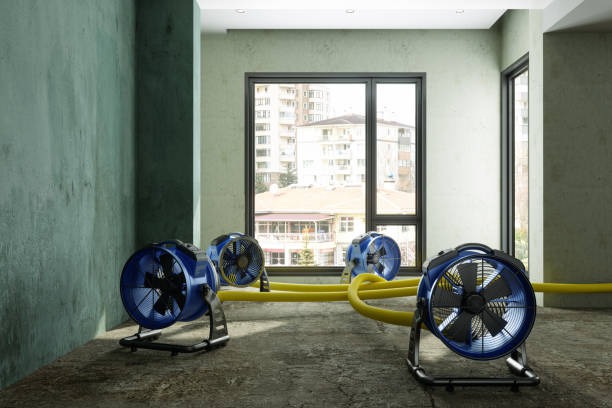When it comes to water damage, time is of the essence. Acting quickly can significantly reduce the level of damage incurred and minimize the cost involved in restoration. The faster you respond, the less likely the water is to cause long-term structural damage and mold growth. Prioritizing swift action is not just a smart decision; it’s an essential one.
Why Speed Matters
Water can be incredibly destructive, penetrating floors, walls, and ceilings. If not attended to quickly, it can ruin the foundation of any building. Not to mention, it provides the perfect breeding ground for mold. Acting within the first 24 to 48 hours is crucial to avoid extensive property damage and subsequent health risks associated with mold infestation.
Best Practices in Water Mitigation
The right approach to water mitigation is not a one-size-fits-all strategy. Different scenarios will require different methods, but some universal practices can greatly assist in effectively reducing water damage. Here’s a rundown of these practices:
1. Identifying the Source
First and foremost, it’s vital to identify and cut off the source of water intrusion. Whether it’s a burst pipe, a leaking roof, or flooding, stopping the water at its source minimizes further damage.
Steps to Identify Sources
-
Inspect visible areas for obvious leaks.
-
Use moisture detectors to identify hidden leaks within walls.
-
Check water supply lines and fixtures.
2. Effective Water Extraction
Removing standing water should be the next course of action. Using pumps and vacuums designed for heavy-duty extraction ensures that the majority of the water is evacuated from the premises. This must be done with care to prevent further damage.
Tools for Water Extraction
-
Submersible pumps for larger volumes of water.
-
Wet/dry vacuums for smaller puddles.
-
Dehumidifiers to reduce moisture in the air.
Drying and Dehumidification
Even after water extraction, moisture can linger in materials like wood, drywall, and carpeting. Drying these areas thoroughly is crucial to prevent mold growth and structural damage over time.
Implementing the Drying Process
Once water is extracted, the drying process involves ventilating the affected area with fans and opening windows if weather permits. Industrial dryers might be necessary for larger buildings and more severe cases.
Best Drying Practices
-
Place fans in strategic locations to ensure airflow.
-
Utilize commercial dehumidifiers to hasten the drying process.
-
Regularly monitor moisture levels in affected materials.
Addressing Mold Risks
Mold is a silent intruder that, if left untreated, can cause significant health issues and structural problems. Addressing mold risks is a critical component of water mitigation efforts.
Understanding Mold Hazards
Mold can start to develop within 24 to 48 hours of water exposure. It thrives in moist, dark environments and can spread rapidly if not addressed. Employing professional mold cleanup in Stamford ensures that all traces of mold are effectively eradicated, protecting both your health and property.
Choosing Professional Help
While some minor water issues can be dealt with independently, many scenarios require professional intervention. Restoration experts possess the equipment and experience needed to handle severe cases efficiently.
Benefits of Hiring Professionals
A professional team can offer peace of mind, efficient service, and assurance that the water damage is meticulously handled.
Reasons to Consider Professionals
-
They have specialized equipment for comprehensive water extraction and drying.
-
Professional services can identify and mitigate hidden problems.
-
They ensure mold prevention measures are properly executed.
Exploring the expert assistance of water mitigation in Stamford can ensure that your property is restored to its original condition with minimal hassle. Getting a team that understands the local environment and logistics can make a world of difference.
Emergency Preparedness
Preparation is key to minimizing damage when disaster strikes. Having a plan in place can help you respond swiftly and effectively.
Creating an Emergency Plan
Identify potential risks to your property and have a plan for each scenario. Ensure that all household members are aware of the procedures to follow and that emergency contacts are easily accessible.
Key Components of an Emergency Plan
-
Know how to shut off the main water supply.
-
Store the contact information for a reliable restoration service.
-
Keep valuable items in elevated and waterproof storage.
If you’re dealing with a serious water crisis, it might be worth seeking out restoration companies in Stamford. Their expertise in damage control and recovery ensures your property is back to its best faster than if you tackled it on your own.
Insurance Matters
Dealing with water damage can be overwhelming, and ensuring you have the right insurance coverage is vital to avoid out-of-pocket expenses.
Insurance Policies and Water Damage
Understanding what your insurance covers can help alleviate financial stress. Most policies cover sudden and accidental water damage but often exclude certain types of flooding.
Steps to Take
-
Review your insurance policy for water damage coverage specifics.
-
Document all damages and receipts for repair expenses.
-
Report the damage to your insurer as soon as possible.
Final Thoughts
Water damage can wreak havoc on your property, but by implementing these best practices and enlisting the right help, you can significantly reduce its impact. Remember, quick response is paramount. Whether tackling a small leak or major flooding, having a robust plan and professional resources at your disposal is essential.
By staying prepared and informed, you can protect your property and health and, most importantly, guarantee a safe and swift recovery from any water-related disaster.
